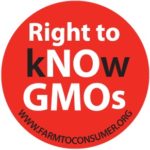By Catherine Haug, March 13, 2017 (Photo, right, from Cornucopia (5)
Cat’s food-shopping tips:
- Produce: If you can afford Organic, it is highly recommended you choose Certified Organic or Organically-grown. If your budget is limited, see the Clean Dozen and Dirty Dozen food lists, below.
- Red meats: Pasture/grass raised and finished, locally-raised livestock provide the most healthful meats; see also my posting Why ‘Pasture-Raised’ trumps ‘Organic’.
- Poultry meats: Your best choice locally raised poultry, provided they have access to the outdoors; and not just a small door to the outdoors, but a door you can use, too. Chickens eat not only seeds but also insects, grubs and worms, and they need the sun for the sunshine vitamin, just like we do.
- Eggs: Your best choice is eggs from poultry raised in similar way as for ‘poultry meats’ above.
- Dairy: Buying from a local farmer (who keeps his/her dairy livestock in pasture) is highly recommended. Organic commercial milk is ultra-pasteurized and, in my opinion, ultra-damaged. See my article on Cat’s Kitchen: Raw Milk: A Real, Natural & Perfect Food, which has a discussion about the problems with ultra-pasteurized milk. If drinking raw milk is not for you, choose simply ‘pasteurized’ milk (HTST) from a local dairy, such as Kalispell Kreamery here in the Flathead Valley. See Food Safety & Pasteurization on The EssentiaList for a description of the various pasteurization types.
- Cheese: This is a dairy food but I give it its own bullet because we have a great source of raw-milk cheeses in Montana: Lifeline brand, from Victor MT. There are also local brands that use simply-pasteurized milk to make their cheeses, such as Flathead Lake Cheese (2) in Polson, and Amaltheia Dairy (3) in Belgrade.
- Avoid processed foods, even if they say ‘organic’ on the label, because unless they are Certified Organic, they will contain up to 15% non-organic ingredients most of which are GMO. See my posting: Natural vs Organic Labeling for more.
Buying Organic can be expensive, so if your food budget is limited, read on. (more…)


